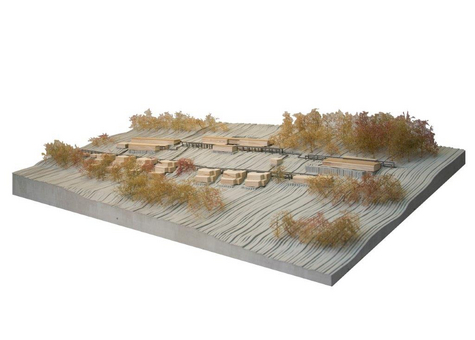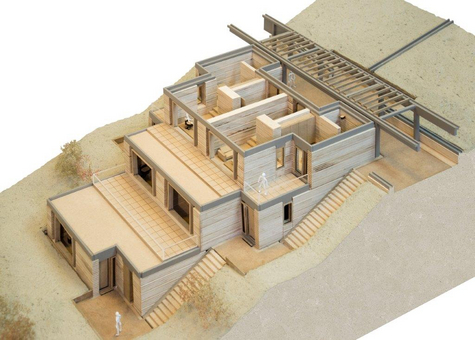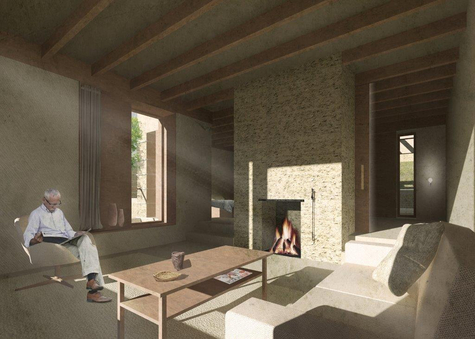Dennis Meijerink
- Contact
- LinkedIn
Aarde tot bezinning
An indigenous ensemble that paves the way for recovery from a burn-out
I have noticed that many people in my immediate circle have difficulty living up to the ideal image put forward in our society. The feeling that you have to perform at every moment and in doing so test your boundaries. A scenario in which one can easily lose oneself, leading to decreased energy and motivation in relation to work and family life. On the basis of this observation, I began to wonder whether architecture could also play a role in stimulating and contributing to recovery as part of the treatment method.
With ‘Ground for contemplation’, I have created a spatial alternative to a temporary type of housing for a retreat, in which architecture and its materialisation give a boost, in my opinion, to the support of the patient in his or her recovery process. An indigenous ensemble in which 32 patients can retreat from the daily stresses of life and find a place to relax, recover and recuperate. A place that occupies a gentle and understated position in the hilly landscape of South Limburg, and that is in line with the character and the movement of the lynchet landscape at the Kruisberg hill in Wahlwiller.
The character of the design is driven by my fascination for loam architecture. Loam gives me the feeling of being conscious of my surroundings. Being able to ground myself and clear my mind for contemplation. Loam architecture has life; it breathes and exhibits visible changes over time. For the spatial experience of the ensemble, I started by experimenting with which elements stimulate contemplation and becoming grounded in order to be able to rediscover energy and interaction with others. Can the experience of loam stimulate contemplation and the feeling of becoming grounded? In order to this, I went in search of the dialogue between human, material and landscape.
In the design, water symbolises many associations, including change, contemplation, movement and encounters, which are all translated spatially in the ensemble. In addition, water acts a bridge between the eroding lynchet landscape, the programme and the architecture. In this way, the architecture serves as a visual manifestation of the protection against water. And it is visible in the architecture that it is changed and transformed by erosion. An experience that, in my eyes, represents the stimulus and change that I am looking for in order to pave the way for the recovery of the patients.
Graduation committee: Machiel Spaan (mentor), Herman Zeinstra, John Lonsdale. Extra members for the examination: Bastiaan Jongerius, Miguel Loos










